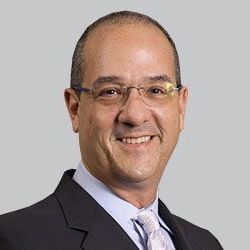Article
NIH Grant to Support Research on Synucleinopathy Detection
Author(s):
CND Life Science’s Syn-One test marks the next step in synucleinopathy detection by offering a quick and minimally invasive procedure.
Todd D. Levine, MD

Cutaneous NeuroDiagnostics (CND Life Sciences) was recently awarded a $2.4 million phase 2 Small Business Innovation Research (SBIR) grant from the National Institute of Neurological Disorders and Stroke of the National Institutes of Health (NIH). CND Life Sciences will use this grant to implement an extensive study to investigate and improve its Syn-One test, a tool that facilitates the detection and diagnosis of synucleinopathies.
The Syn-One test detects folded, phosphorylated alpha-synuclein (aSyn), a common biomarker of synucleinopathies such as Parkinson Disease, in the dermis to help physicians differentiate between and diagnose different synucleinopathies that often present similarly.
The use of skin aSyn to diagnose synucleinopathies has been explored before—researchers from Case Western Reserve University School of Medicine previously analyzed skin aSyn seeding activity and were able to accurately diagnose synucleinopathies such as Parkinson disease, Lewy body dementia, and multiple system atrophy, as well as differentiate these from tauopathies such as Alzheimer disease.
To learn more about Syn-One and the value of this upcoming study, NeurologyLive spoke with principal investigator Todd Levine, MD, neuromuscular neurologist; medical director, Neurology, Honor Health; co-founder and chief medical officer, CND.
NeurologyLive: How will early diagnoses of synucleinopathies help improve patient care?
Todd Levine, MD: First, it is important to note that early diagnosis of synucleinopathies is quite challenging, even to the most experienced clinicians. Each individual synucleinopathy can be confused with non-synucleinopathies that have different treatments and prognoses. For example, Parkinson’s disease (PD) can be misdiagnosed as progressive supranuclear palsy (PSP) and dementia with Lewy bodies (DLB) can be mistaken for Alzheimer’s disease (AD). Offering neurologists an objective diagnostic tool that provides visual pathologic proof of abnormal synuclein in dermal nerve fibers is a significant advantage.
Second, having a more reliable way to diagnose a synucleinopathy earlier in the disease process provides the patient and family with greater clarity and assurance as soon as signs and symptoms present themselves. The earlier we can give a patient a definitive diagnosis, the more we can limit unnecessary testing and diagnostic uncertainty, which can lead to anxiety for the patient and family. Having the right diagnosis can also mean starting the proper treatments earlier and avoiding treatments that either (a) won’t work, or worse, (b) could be harmful if they are contraindicated for the condition we are treating. Overall, in the case of some synucleinopathies which have very difficult prognoses (like DLB), having the right diagnosis early can help patients and families with life planning and medical decision making.
How does using Syn-One compare to how synucleinopathies are typically diagnosed?
At present, the diagnosis of a synucleinopathy is typically made by a physician based on clinical examination findings and the patient’s history, with some additive support from imaging (MRI scans, DaTscans), autonomic testing, cognitive testing or limited genetic testing. Imaging and genetic testing are significantly more expensive than the Syn-One Test and less convenient for the patient. The Syn-One Test requires three small punch skin biopsies to be performed within a neurologist’s or other clinical practice, a minimally invasive procedure that takes only 15 minutes and can be done anywhere in the country. And, with over 95% sensitivity and specificity each, the accuracy of the Syn-One Test makes a meaningful contribution to patient care.
Syn-One is already commercially available—can you explain the study you have planned and what you hope to accomplish?
The Synuclein-One Study will enroll 500 subjects from over 20 clinical study sites, including Beth Israel Deaconess Medical Center in Boston (a sub-awardee for the study). This study will allow us to investigate differences between the different types of synucleinopathy to determine if pathological analysis using the Syn-One Test is sufficient to make a distinction between Parkinson disease, or multiple system atrophy. In addition, the NIH-funded study will provide ongoing validation of the very high sensitivity and specificity of the technique in a well-controlled, blinded protocol.
Transcript edited for clarity.




